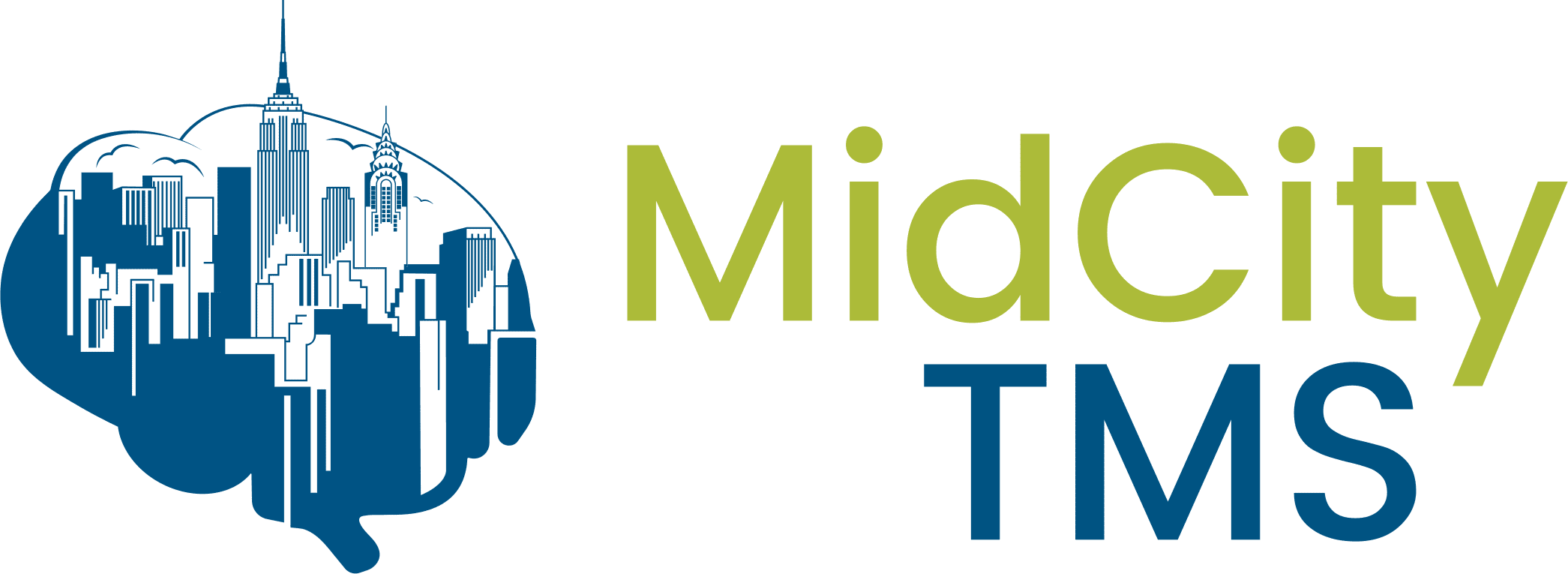In addition to TMS, the team at Mid City TMS is excited to be able to offer since 2019 Spravato (esketamine) for treatment-resistant Depression. Spravato is the brand name of the drug esketamine, which is delivered via a nasal spray. Esketamine is similar to ketamine, which is a mixture of the two isomers, S-ketamine (esketamine) and R-ketamine. We have been very impressed with how effective and safe Spravato has been. This post discusses the difference between ketamine and esketamine for Depression treatment.
Recently, there have been new developments surrounding the use of esketamine (Spravato) and ketamine to treat people with major depressive disorder (MDD), treatment-resistant Depression (TRD), and Depression with suicidal ideation (MDSI). While there are many drug options for Depression, if there has been little or no improvement, other options may become necessary. Ketamine and esketamine may provide further improvement when lack of sufficient response to antidepressants occurs.
How Do Ketamine and Esketamine Work?
Ketamine and esketamine work for Depression through a different mechanism than other antidepressant drugs. Conventional antidepressants increase levels of naturally occurring chemicals such as serotonin, norepinephrine and dopamine. These chemicals are messengers that relay communication between brain cells. The theory is that having greater quantities of these neurotransmitters allows for better communication between brain cells, which positively affects mood.
Ketamine and Esketamine affect three main receptors:
- Opioid receptor: some research suggests that activation of opioid receptors is partially involved in ketamine’s and esketamine’s antidepressant effect.
- NMDA (N-methyl-D-asparate) receptor: this receptor manages synaptic plasticity–keeping your synapses pliable and able to retain information. Ketamine and esketamine block NMDA receptors in the brain and thereby increase levels of glutamate, the most abundant chemical messenger in the brain. Blocking NMDA receptors also activates AMPA receptors to release other molecules that help brain cells communicate with each other along new pathways. Known as synaptogenesis, this process likely affects mood, thought patterns, and cognition, including memory.
- AMPA (Alpha-amino-3-hydroxy-5-methyl-4-isoxazole propionic acid) receptor: this receptor also uses glutamate, similarly to the NMDA receptor. The AMPA receptor manages and mediates fast-acting synaptic activity, such as memory and learning abilities. AMPA receptor abnormalities can contribute to behavioral health disorders, such as ADHD.
What Is the Difference Between Ketamine and Esketamine?
What Is Ketamine?
You may be familiar with ketamine as an anesthetic that was commonly used on battlefields or as a veterinary drug. A much lower dose of ketamine is given for Depression compared with the dose necessary for anesthesia. This type of Ketamine is racemic ketamine, It is a mixture of “R” and “S” ketamine. It was previously approved by the Food and Drug Administration to be used as an anesthetic but has not been FDA approved as a treatment for Depression.
Ketamine is usually administered intravenously because when given orally, it metabolizes too fast and the effects are reduced. While the intravenous method is often effective and provides rapid results, patients have to receive treatment as much as 3 times a week and repeatedly have IV lines inserted, which is costly and can be inconvenient to patients.
What Is Esketamine?
Esketamine (brand name Spravato) can be administered intranasally and also produces rapid, effective results. Esketamine is the S form of Ketamine. In 2019, the FDA approved the use of esketamine (Spravato) in adults for the treatment of TRD and MDSI when used in conjunction with an oral antidepressant.
The safety and efficacy of esketamine (Spravato) is supported by many short-term and long term studies. A 2020 study by Papakostas studied the use of esketamine in 774 people who were involved in 5 trials and showed that patients with MDD or MDSI who received Spravato treatments had a better outcome than those who received placebo.
Conventional antidepressants may increase suicidal thoughts at the beginning of treatment, especially in children and young adults. Esketamine (Spravato) is the only drug besides lithium, a drug commonly prescribed for bipolar disorder, that is proven to decrease suicidal thoughts. Unlike other antidepressants that you may be able to take in pill form, esketamine is currently only able to be administered by medically trained personnel: they administer the intranasal esketamine in the office and then monitor the patient for two hours before allowing them to leave.
The side effects of esketamine occur only during the session and can include:
- Increased blood pressure
- Dissociation
- Dizziness
- Nausea
- Sedation
How the Difference Between Ketamine and Esketamine Administration Affects You
Esketamine (Spravato) is more potent than ketamine, which allows doctors to give lower doses and potentially see fewer side effects. Both ketamine and esketamine should be administered by a doctor. These drugs are DEA Schedule III controlled substances and can become highly addictive. For esketamine, it is recommended to be administered two times a week for the first four weeks followed by once a week for the next four weeks. Following this schedule, esketamine can be administered just once every two to four weeks and sometimes tapered gradually to discontinuation. However, for ketamine, there is no singular recommended administration schedule as it is still as yet unapproved by the FDA.
The side effects tend to peak at 40 minutes and wear off within two hours of treatment. This means the short-term side effects, while they may occur, don’t last for long periods. Read more about Spravato as a treatment option for TRD, here.
Will Insurance Cover Ketamine or Esketamine Treatments?
Ketamine treatments for Depression are not covered by insurance companies because it’s experimental and not FDA approved. Therefore, you have to pay out of pocket for it.
On the other hand, Esketamine (Spravato) is almost always covered by insurance, including Medicare, because it is FDA-approved and well-studied to be effective and safe. To be considered eligible for insurance coverage for Esketamine (Spravato), a person usually has to have tried at least two other antidepressants without sufficient benefit or with intolerable side effects.
Explore Your Treatment Options With Mid City TMS
When Spravato is effective, people usually respond within one to three sessions with improvements. Mid City TMS is excited to be able since 2019 to continue to provide Spravato (esketamine) for treatment-resistant Depression.
One additional treatment option is TMS (transcranial magnetic stimulation). TMS is an FDA-approved, noninvasive, highly effective treatment option for people with MDD. There have been numerous studies performed on the effectiveness and the safety of TMS and the outcomes have been favorable. At Mid City TMS we have highly trained professionals who work with the latest technology and well-researched treatment options to help you feel better by individualizing the best treatment strategies for you. Almost all insurances cover TMS treatment. Contact us today to learn how you can start your TMS treatment.
Sources:
-
Vollenweider, F. X., & Kometer, M. (2022). The therapeutic potential of psychedelics: A translational perspective. Frontiers in Psychiatry, 13, 8842481. https://www.ncbi.nlm.nih.gov/pmc/articles/PMC8842481/
-
Harvard Health Publishing. (2019, May 22). Ketamine for major depression: New tool, new questions. Harvard Health Blog. https://www.health.harvard.edu/blog/ketamine-for-major-depression-new-tool-new-questions-2019052216673
-
Wilkinson, S. T., Sanacora, G., & Bloch, M. H. (2020). Ketamine: A potential rapid-acting antidepressant. Journal of Clinical Psychiatry, 81(3), 19f13172. https://pubmed.ncbi.nlm.nih.gov/32459407/
-
Johns Hopkins Medicine. (n.d.). Esketamine for treatment-resistant depression. Johns Hopkins Medicine. https://www.hopkinsmedicine.org/health/treatment-tests-and-therapies/esketamine-for-treatment-resistant-depression



